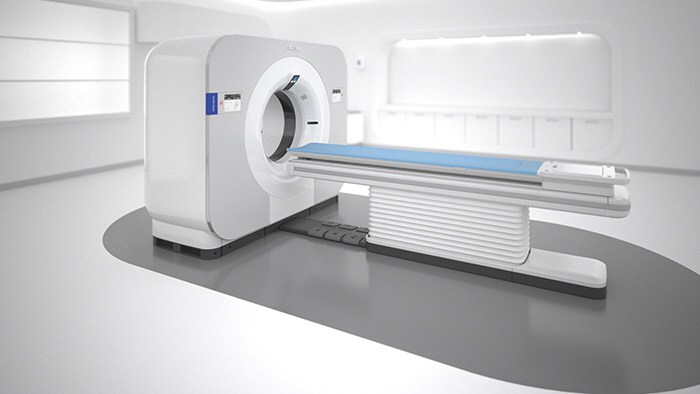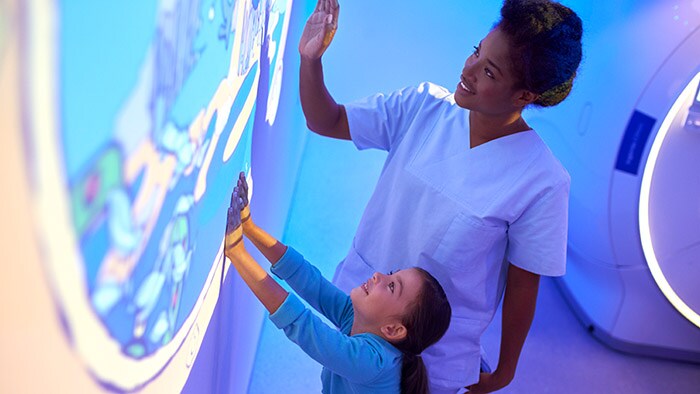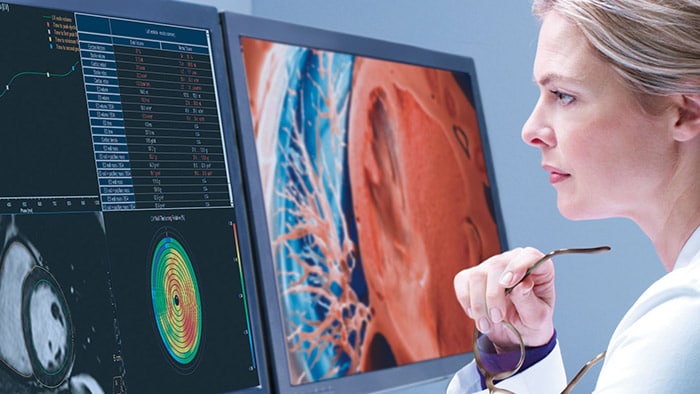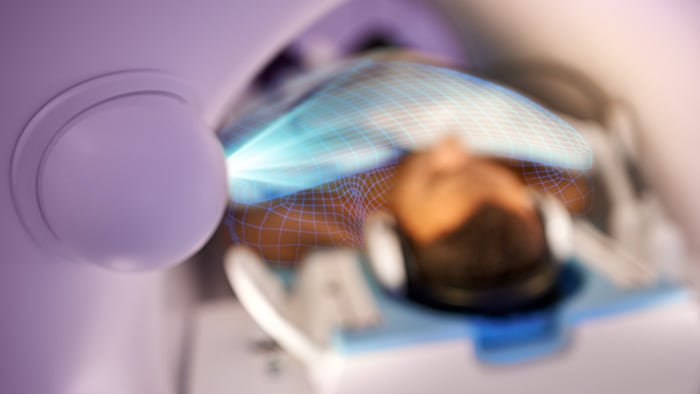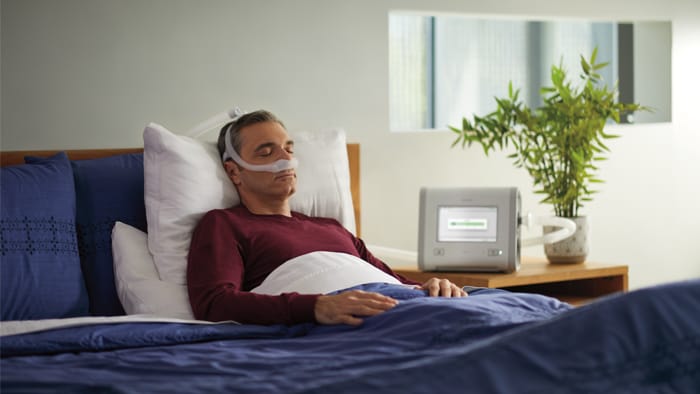The COVID-19 pandemic sparked a global sense of urgency to pivot and adapt, causing the industry to rapidly increase the adoption of interoperable tools to support innovations in care management, virtual health, and remote patient monitoring. Within the last year, the healthcare industry has witnessed an acceleration in its digitization journey and truly demonstrated the value of digital health and shifted how patients received care.
At the virtual HIMSS21 & Health 2.0 European Health Conference, held from June 7-9, Philips is addressing the ongoing challenges faced by a global healthcare industry that seeks to build on this momentum and create a longstanding digital framework. By adopting connected, secure and scalable informatics solutions across clinical and operational departments, healthcare organizations have an opportunity to unify care across care settings to help clinicians and health system leaders improve health outcomes, enhance patient and staff experiences and reduce the cost of care.
As healthcare continues to evolve, organizations must take a holistic view of the end-to-end patient journey when considering how to adapt and lead the future of care delivery. Even in a post-pandemic future, patients will continue to access care from different settings, encouraging healthcare organizations to meet patients where they are – with personalized services that are informed by centralized sources of information.
The rapid escalation of virtual care tools presents health and service providers with an opportunity to fundamentally transform the way people interact with healthcare. Now is the time to break down the remaining barriers between health analytics, care management, operations, and patient engagement. This will truly enable connected care and collaboration.
Roy Jakobs
Chief Business Leader Connected Care, Philips
“The rapid escalation of virtual care tools presents health and service providers with an opportunity to fundamentally transform the way people interact with healthcare,” said Roy Jakobs, Chief Business Leader Connected Care, Philips. “Now is the time to break down the remaining barriers between health analytics, care management, operations, and patient engagement. This will truly enable connected care and collaboration.”
Expanding care beyond the hospital walls
The landscape of care delivery has been rapidly evolving. With more care being managed outside the hospital, data intake continues to grow. However, some IT infrastructures are not designed to keep pace with this influx of information. Many health systems today have a myriad of niche systems, modalities, and devices with associated software that make managing this data challenging.
Fragmented IT systems can create unique difficulties related to the delivery of care, particularly for clinical staff. In this new environment where care is not always managed within the hospital, the integration and standardization of patient information become crucial to being able to make confident, well-informed clinical decisions. As patients continue to embrace virtual care, providers will continue to offer services that were previously done in the hospital in the home, such as post-discharge patient monitoring. This means that data needs to be accessible. Patients expect transparency of information and protection of their privacy, but care teams and staff also need easy and secure access to patient information at different points in the care continuum.
In Philips’ 2021 Future Health Index (FHI) report, feedback from healthcare leaders – including executive officers, financial officers, technology and information officers, operations officers and more – explores the challenges they have faced since the onset of the pandemic, and where their current and future priorities lie. With a focus on patient-centered healthcare enabled by smart technology, their vision is shaped by a fresh emphasis on partnerships, sustainability and new models of care delivery, both inside and outside the hospital. When it comes to telehealth, nearly 64% of healthcare leaders around the world reported they would continue to prioritize telehealth when it comes to digital health technology investments.
And the interest in adopting innovative healthcare technologies to drive more efficient and effective patient care doesn’t stop there. More than half (52%) of FHI surveyed informatics leaders say that, three years from now, their hospital or healthcare facility will need to invest in implementing predictive healthcare technologies to be prepared for the future and make them more agile. But such evolution does not come without challenges. Leaders cite difficulties with data management (53%) and lack of interoperability and data standards (45%) as the biggest barriers to digital health technology within their facility.
Healthcare organizations can make the most of complicated and overwhelming data streams by having a common, cloud-based IT infrastructure, where data can be easily accessible, anywhere – an essential requirement for new models of care delivery, where patient information must be visible in care settings that include the home, outpatient clinics, and traditional hospital environments.
Improving efficiencies to support financial sustainability
More than ever before, healthcare organizations are also being challenged to do more with less, maximizing operational and financial efficiencies. Last year, the American Hospital Association, reported that hospitals were projected to lose an estimated $323 billion due to COVID-19 related expenses and losses, leaving nearly half of America’s hospitals and health systems with negative operating margins by the end of the year.
These financial pressures require healthcare organizations to find effective solutions to help them maximize existing resources and minimize costs. IT solutions that are nimble and allow for scalability as organizations grow can allow them to gain a more holistic view of their operations and of the patient journey. Predictive solutions can provide intelligent insights, which inform actionable outcomes inside and outside the hospital. For example, AI-enabled tools facilitate smart scheduling to help ensure exam appropriateness, reduce no-shows and late arrivals, and assist with workforce efficiency. Solutions can also help track patient flow and bed utilization, empowering clinicians and administrators to ensure patients receive the right level of care and can be discharged or stepped down safely and efficiently.
At the same time, cloud platforms provide health systems with flexibility that allows leaders to invest in new technology and prioritize key areas of improvement, while also providing a more predictable cost model. This kind of common infrastructure also means that the processes of administering the data are the same from solution to solution – which reduces strain on internal IT resources and means clinicians can spend less time learning how to enter data, and more time using it to guide their clinical decisions.
Accelerating the digital transformation
In order to adapt to an increasingly virtual and expansive care environment, and work towards achieving the quadruple aim, healthcare organizations need to be supported by flexible, connected health platforms and tools that help them meet these market demands. The pandemic has demonstrated that individual point solutions aren’t enough as the industry continues its digital transformation, solutions such as cloud technology, telehealth, virtual tools, and interoperability are critical.
As demand for care is rising and access to care is limited or restricted, health systems are seeking ways to support retention and support clinical productivity management. New technologies can transform and enable fast innovation. Analytics, machine learning, and AI allow the identification of patterns and correlations, to provide actionable information for decision support.
Providers need to be able to link clinical workflows inside the hospital with the patient’s health journey in ambulatory care and at home in a cost-effective way. To make meaningful progress in the digitization journey, solutions have to connect care across care settings and provide a single, secure, unified experience for patients and healthcare professionals alike.
For more information about Philips’ presence at HIMSS21 European Health Conference, including the solutions that will be highlighted and speaking engagements, please visit Philips.com/himss.





